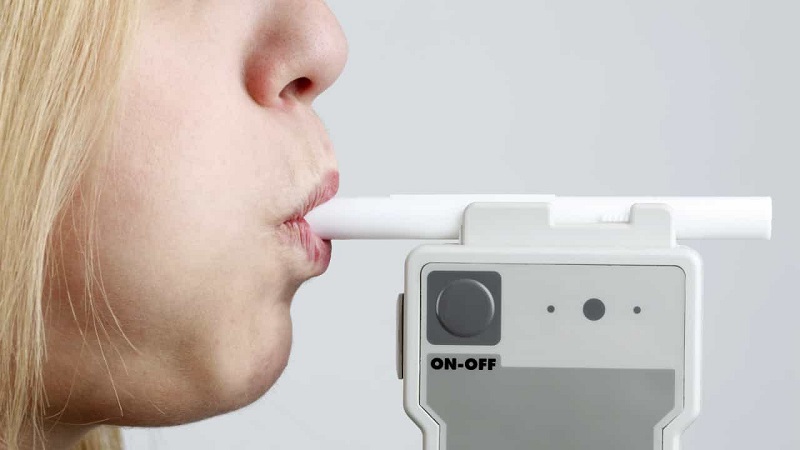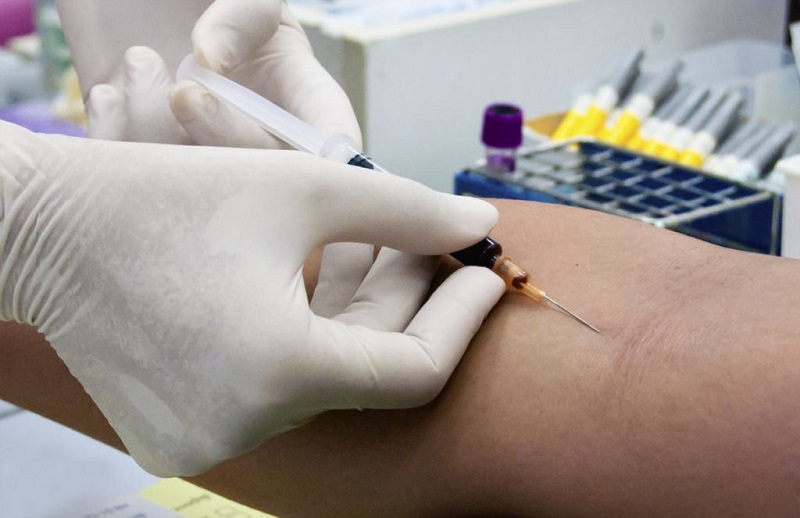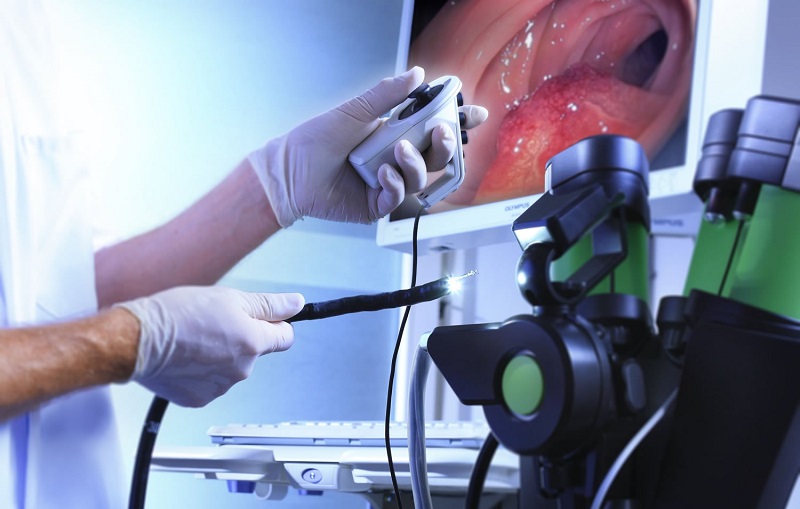
As a nutritionist, in my years as a student, the mechanism of food intolerances was hardly known in depth. Nowadays, after advances in medicine and nutrition, more and more cases of intolerance to certain foods and nutrients are being detected that previously was confused with other types of ailments. The lactose intolerance is one of the most common, although there is still a lot of research to facilitate its control and treatment. The first step to avoid the so annoying symptoms that cause the lactose intolerance is to make the so-called lactose intolerance test.
The test will ensure if a patient who could present the symptoms really suffers. It is a routine test that is being established in many hospitals and health centers, with which to easily detect the level of intolerance that the person has.
Do you think that you too could have an intolerance to dairy? Are you about to get tested for lactose intolerance and do not know what you will face when you get to the medical center? We tell you everything you need to know about the lactose intolerance test to go 100% prepared.
What is lactose intolerance?
Lactose intolerance is the inability of the body to digest lactose from milk and dairy products.
This lactose is the natural sugar in all kinds of milk of animal origin, including human milk. When a person’s body does not find the enzyme responsible for degrading it for absorption at the intestinal level, lactase, sugar causes the symptoms of intolerance.
Symptoms of lactose intolerance
Do you think you could have a problem with lactose intolerance? Symptoms can vary a lot between patients since the level of intolerance can be varied. While there are people who have complete intolerance, there may be others who only have a slight sensitivity.
You could have an intolerance to the natural sugar of the milk if after taking some milk derivative you feel some of these more frequent symptoms:
- Sickness
- Vomiting
- Acid diarrhea
- Explosive defecation
- Gases and flatulence
- Swelling in the stomach
- Abdominal pain
- Headache
- Intense tiredness
- Muscle and joint pain
Keep in mind that lactose intolerance is not the same as an allergy to milk protein or any other nutrient.
If you notice that dairy does not feel good, that your stomach often hurts after taking some milk derivative, or that you usually suffer from extreme tiredness and headache for no reason, go to your doctor and ask him or her to make you a tolerance test.
Lactose intolerance test step by step
Lactose intolerance test is a medical test that measures the ability of the intestine to break down the sugar in milk.
If the organism of a person cannot decompose the lactose, the test will be positive, in some cases measuring the level of intolerance that the patient presents.
Exhaled breath test
It is also known as the breath hydrogen test and is one of the most frequent forms of lactose intolerance diagnosis.
The exhaled hydrogen test measures the amount of hydrogen in the air that the patient exhales on a tube. The test is done several times, in order to build a lactose curve that shows the levels of intolerance to this nutrient.
For the preparation of the test, the patient is asked to breathe inside the tube. Then you are given a liquid containing lactose, which you must drink and wait a few minutes for it to take effect.
Every certain (about 15 minutes) time samples are made of the breath, verifying the level of hydrogen that is in the expiration. The normal values of hydrogen in a person who does not have lactose intolerance are quite low, but if the lactose cannot be broken down, the hydrogen levels will be higher.
Keep in mind that this and other tests could have side effects on the patient who has an intolerance. Since the sample given to the patient contains a high dose of lactose, he could notice the symptoms of discomfort throughout the day.
Blood test for lactose overload
Another of the most common lactose intolerance test to detect lactose along with the hydrogen expired test is the blood test. For her, blood samples will be taken from the patient as the test is performed.
This test is based on the release of blood glucose that occurs after the digestion of lactose. Lactose is a sugar that in digestion is divided into two monomers of glucose and galactose respectively, but if it is not digested in the intestine due to lack of the enzyme lactase, you will not notice the rise in blood glucose.
For this test, a patient’s blood sample is taken on an empty stomach early in the morning. Then it is given a liquid containing lactose, and allowed to act for a few minutes for digestion.
Every so often (approximately 60 and 120 minutes) blood samples are taken from an artery of the arm, which will be analyzed to make a lactose curve according to the levels found in the blood. If the levels are practically imperceptible, the patient will clearly have tested positive for lactose.
Bowel biopsy
In addition to these more frequent and less invasive intolerance tests, there are other methods that can help detect intolerance. For the lactose intolerance test, small bowel biopsy is usually used, obtaining samples for later analysis.
It is a method that is done after sedation of the patient, to make an endoscopy by introducing a flexible fiber-optic tube through the mouth or nose. It is lowered little by little to the upper intestinal tract taking the samples from the first small bowel segments.
From these samples can be analyzed the ability of tissues to produce the enzyme lactase. When a patient has a measurement less than 10U / g of protein, it can be said that he has a lactase deficiency in his intestine.
Genetic test
There are also other very effective methods that involve less invasiveness in the patient, and that are free of side effects. One of them is the genetic diagnosis, which is usually paid and can have a very variable price depending on the types of tolerances that you wish to analyze.
For the lactose test, the genetic deficiency of lactase is usually determined through the analysis of the patient’s genes. It is done by extracting a sample of DNA from blood or saliva, to follow a protocol already marked.
How to know if you are lactose intolerant
At the end of the lactose intolerance test, you can see colored bands on a strip, which according to the level and color will give us information about the genetic predisposition to have the primary deficiency of lactase (LNP), even if they have not yet come to manifest the symptoms. It is very useful for example to know if you have an intolerance when there are other cases of lactose deficiency in the family.
Test of Gaxilosa
Due to the boom that the tests for the detection of intolerance are having, every year new methods emerge that are increasingly simple and effective. One of the most recent for lactose is the method of Gaxilosa, which also measures the digestion of sugar at the intestinal level.
This test consists of administering a low dose of gaxilose, a synthetic disaccharide very similar to lactose, which is hydrolysed with the same lactase enzyme. The disaccharide is divided into two, being released in urine one of its parts, the xylose. The amount of xylose that is detected in urine will, therefore, be proportional to the amount of disaccharide that the enzyme has digested.
In this way, we can know if there is lactase deficiency and at what level, without needing to give the patient a lactose sample that could have harmful side effects in their organism. Patients do not feel discomfort during or after the test, and it is very effective to know whether or not they have intolerances.
Other methods for the detection of lactose intolerance
There is a type of lactose intolerance that manifests itself from birth, making it impossible for the baby to drink breast milk, which of course also contains lactose.
It is for this reason that specific tests have been created to measure intolerance in infants and young infants, without having to resort to invasive tests or requiring the participation of the patient. One of the most common tests in babies is the fecal tests, which end the pH of the stool.
Reactive strips are used to measure pH in fresh feces, determining the acidity of these and the possibility that the child was born with a clear manifestation of lactose intolerance, for which immediate nutritional treatment is required.
If you suspect that you may have an intolerance to lactose or any food, or if you think your children or a family member might have it, tell your doctor what the symptoms are to detect the inability to digest any nutrient as soon as possible. In health issues do not play it!










